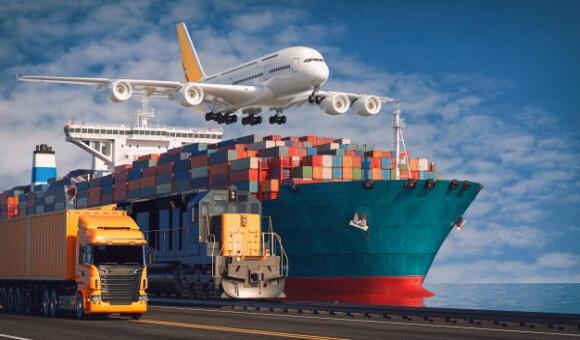Fuel Tank Manufacturers in UAE and the Role of Vacuum Tankers: An Industrial Overview
The United Arab Emirates (UAE) has emerged as a global hub for infrastructure development, logistics, oil and gas, and heavy industries. With its strategic location, flourishing economy, and robust industrial base, the demand for specialized transport and storage solutions is on the rise. Among the most critical components supporting this industrial ecosystem are fuel tanks and vacuum tankers.
In this blog, we will explore the importance of Fuel Tank Manufacturers In UAE, the technologies driving the industry, and how vacuum tankers in the UAE are essential for safe waste handling and environmental management. Whether you're a logistics manager, a procurement officer, or a stakeholder in the oil and gas sector, understanding these elements can help guide your investment and operational decisions.
The Growing Demand for Fuel Tanks in the UAE
The UAE’s rapid industrialization has significantly increased the demand for fuel storage solutions across sectors such as transportation, logistics, construction, aviation, and marine. Fuel tanks are not just storage vessels; they are crucial for ensuring safety, regulatory compliance, and uninterrupted operations.
1. Types of Fuel Tanks in Demand
Fuel tanks come in various configurations and are designed to cater to a wide range of needs:
Above-ground fuel tanks: Easy to install and maintain, ideal for sites where mobility or relocation may be required.
Underground fuel tanks: Commonly used in gas stations and fuel depots to save space and improve site aesthetics.
Mobile fuel tanks: Mounted on trailers or trucks, these are widely used for on-site refueling operations at construction sites or remote industrial areas.
The increasing demand for on-site fuel storage and dispensing is fueling the innovation in tank design and portability.
2. Material and Safety Standards
Modern fuel tank manufacturers in the UAE adhere to international safety standards, using high-grade materials such as:
Mild steel and stainless steel for strength and durability.
Fiberglass-reinforced plastic (FRP) for corrosion resistance.
Double-walled construction for environmental safety and leak prevention.
Manufacturers must comply with standards such as API (American Petroleum Institute), UL (Underwriters Laboratories), and ASME (American Society of Mechanical Engineers) to ensure that their products are fit for handling hazardous and flammable liquids.
3. Customization and Technological Advancements
In today’s dynamic industrial setting, one-size-fits-all solutions no longer suffice. Manufacturers are now offering customized tanks based on:
Capacity requirements (ranging from a few hundred liters to tens of thousands of liters).
Integrated fuel management systems for tracking consumption.
Automation features such as level sensors, leak detectors, and remote monitoring systems.
The integration of digital technologies enables better fuel inventory management, improved safety, and reduced operational costs.
The Role of Fuel Tank Manufacturers in Supporting Key Sectors
Fuel tank manufacturers in the UAE are not just serving oil and gas companies; they play a pivotal role in multiple industries:
1. Construction and Infrastructure
Heavy machinery and construction equipment require a constant and reliable fuel supply. Mobile fuel tanks facilitate efficient on-site refueling, minimizing downtime and ensuring project timelines are met.
2. Logistics and Transportation
Fuel tanks are essential for fleet management, particularly for companies with long-haul transportation needs. Having in-house refueling stations helps in cost control and operational efficiency.
3. Emergency and Backup Systems
Hospitals, data centers, and emergency response units rely on diesel generators for backup power. Properly designed and certified fuel tanks ensure these systems function reliably during critical outages.
Vacuum Tanker UAE
Alongside the growth in industrial and urban development, the need for effective waste management systems has become more important than ever. This is where vacuum tankers in the UAE come into play.
Vacuum tankers are heavy-duty vehicles designed to collect, transport, and dispose of liquid and semi-solid waste. They are widely used in sanitation, oilfield operations, industrial cleaning, and environmental cleanup.
1. What is a Vacuum Tanker?
A vacuum tanker is essentially a sealed cylindrical tank mounted on a truck chassis and equipped with a powerful vacuum pump. It creates negative pressure to suck up waste into the tank through hoses. These vehicles are used for:
Septic tank emptying
Industrial sludge removal
Oil spill cleanup
Hazardous liquid waste collection
The UAE, being an industrial hub with strict environmental regulations, relies heavily on these tankers for maintaining hygienic and environmentally compliant operations.
2. Key Features of a Vacuum Tanker
The effectiveness of a vacuum tanker lies in its design and configuration. Some essential features include:
High-capacity vacuum pumps capable of handling thick sludge and semi-solid waste.
Corrosion-resistant tank materials like stainless steel or epoxy-coated steel.
Rear tipping mechanism or discharge valves for easy and safe emptying.
Safety features such as pressure relief valves and sight glasses.
These design considerations are essential in ensuring operational safety and environmental integrity.
3. Applications in Various Sectors
Vacuum tankers in the UAE are used across a wide range of industries:
Municipal sanitation departments use them for cleaning sewage lines and septic tanks.
Oil and gas facilities rely on them for cleaning drilling mud, sludge, and wastewater.
Construction sites use vacuum tankers for dewatering excavation sites.
Marine and port operations utilize them for cleaning bilges and collecting oily waste.
With increasing environmental regulations in place, the demand for modern, efficient vacuum tankers is projected to grow steadily.
Fuel and Vacuum Solutions
In many cases, industries in the UAE require both fuel tank solutions and vacuum tankers to run their operations smoothly. Here’s how they complement each other:
1. Oil & Gas Sector
Upstream and downstream operations need fuel storage for generators, pumps, and vehicles, while vacuum tankers handle sludge, drilling fluids, and produced water. The synergy between these systems ensures cleaner, more efficient operations.
2. Construction and Civil Engineering
Fuel tanks provide refueling points for heavy machinery, while vacuum tankers manage wastewater and dewater foundations. This integrated approach reduces project delays and enhances productivity.
3. Emergency Services and Utilities
Fuel tanks support backup power systems, while vacuum tankers are used for flood response and septic management. Both are critical in maintaining continuity during emergencies.
Sustainability and Compliance
Environmental sustainability is a major concern in the UAE’s Vision 2030 strategy. As such, manufacturers and operators of fuel tanks and vacuum tankers are expected to:
Follow strict environmental and fire safety standards
Incorporate leak prevention technologies
Use materials and designs that reduce emissions and contamination risks
Sustainable waste management and safe fuel storage are no longer optional—they’re legal and ethical imperatives.
Final Thoughts
As industrialization continues to accelerate in the UAE, the role of fuel tank manufacturers and the need for Vacuum Tanker UAE are becoming more pronounced. From supporting critical infrastructure to ensuring environmentally responsible operations, these components form the backbone of several vital sectors.
Choosing the right fuel tank or vacuum tanker requires careful evaluation of material specifications, usage requirements, regulatory compliance, and customization options. Whether for construction, oil and gas, municipal services, or logistics, investing in reliable, compliant, and technologically advanced solutions is key to long-term success.
The UAE continues to set benchmarks in industrial growth and environmental stewardship—and at the heart of this progress lie innovations in fuel storage and liquid waste management.








 UnlockWare Group
UnlockWare Group
Comments (0)